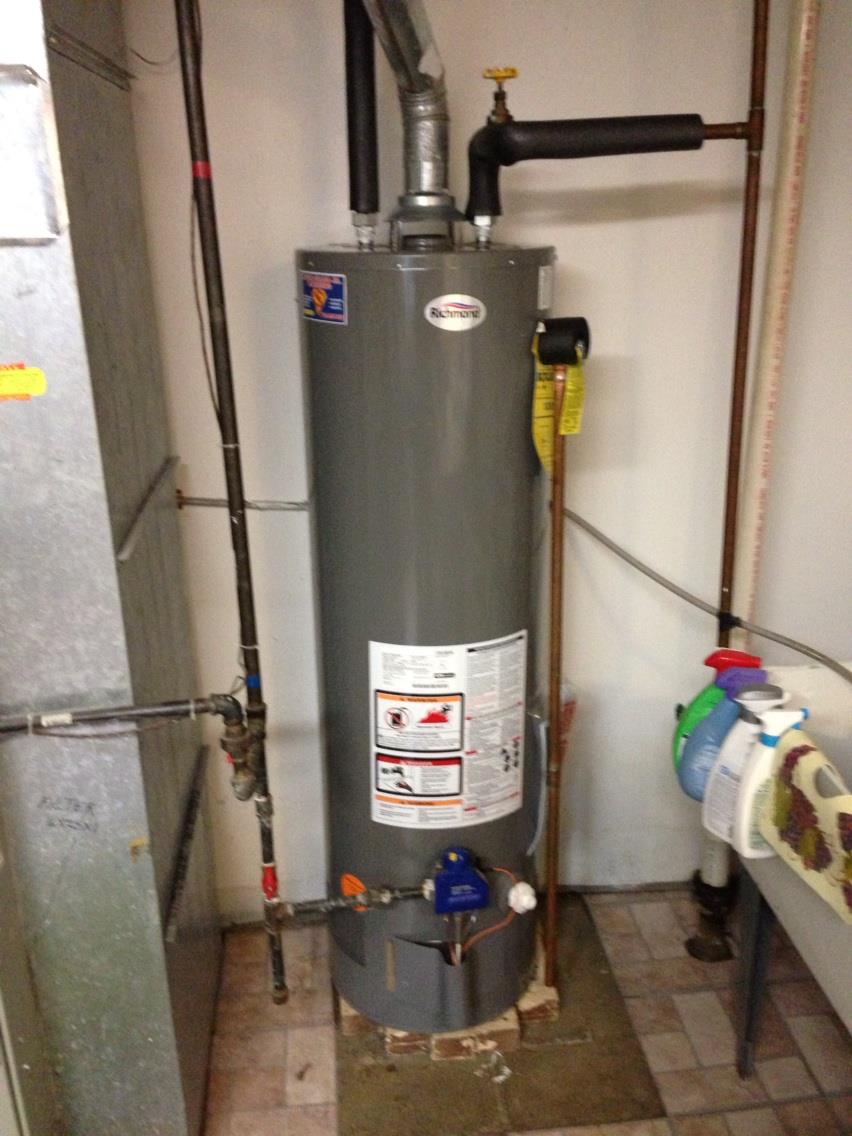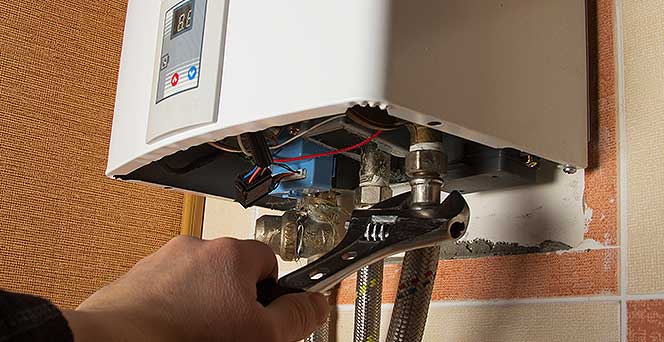Critical Guidance for Homeowners Dealing with Faulty Heating Units
Critical Guidance for Homeowners Dealing with Faulty Heating Units
Blog Article
This article below about How to Avoid a Broken Hot Water Heater is unquestionably stimulating. You should investigate it.

Whether it is located in the cellar or a different space, damaged hot water heater can create anxiety. A conventional unit holds 80 gallons, so an over night leak will certainly result in a flooding. This results in major home damages with soaked wall surfaces and floors. Besides, having no warm water supply is also bothersome. If you are managing these concerns, keep in mind of the following:
Call the Plumber
After doing the first 2 safety and security steps, you must call your plumber to find today to deal with a burst hot water heater. Remember that your device will certainly not simply conk out substantially overnight. There are normally indications that your aging hot water heater has debris accumulation in the inside. Bear in mind of the following:
Rather, as quickly as you find these indications, have actually a professional come to inspect your water heater container. Generally, water heaters have a life expectancy of about 8 to 12 years.
Cut Off the Cold Water Supply
Cut off the containers tap water supply from the source. This goes from your primary water line right into the container. When your tank is in good condition, the cold water stops filling when the container is complete. Considering that it is dripping, the water will certainly continue to stream. Close the valve found at the top of the heater. Rotate this clockwise to close it off. If you can not find it or reach it, you need to shut off that main water system line outside your building.
Shut Down Source Of Power
Prior to calling the plumber, turned off a gas water heater by transforming the temperature dial. This is usually situated at the top of the thermostat. Switch over off the circuit breaker if you have a model that runs on electric power. This will avoid electrocution, specifically if there is a leakage as water is a conductor. Typically, the heating element shuts down when the water hits a certain temperature. However with a damaged storage tank, it might malfunction. Sufficing off ensures you remain risk-free.
Clean Up Residential property
After calling the plumber, document damages by keeping in mind and images so you can declare your house owner's insurance. From there, start the instant cleanup. Secure any type of important personal belongings to prevent more soaking. Then, eliminate any standing water to avoid mold as well as mold growth. Use that to drain pipes the water if you have a completely submersible water pump. Otherwise, the standard pail approach will likewise work. Attempt to wipe out whatever, including walls and walls. Maintain them running to keep air distributing if you have an electric fan and also dehumidifier. This will certainly aid hinder mold development.
Remember, if you discover any type of concerns with your water heater, call the pros right now. You can not take this problem lightly since a faulty thermostat can raise water temperature to an alarmingly high level, resulting in unintentional burns. A damaged heater pressure safety valve can additionally create an explosion. For ideal outcomes, get an annual check so your system obtains inspected, cleaned, drained pipes, and also refilled, assuring ideal efficiency.
After doing the very first two safety actions, you have to call your plumber to come right away to take care of a ruptured water heating system. Rather, as soon as you identify these indications, have an expert come to evaluate your water heating unit tank. Before calling the plumber, closed off a gas water heater by transforming the temperature level dial. If you have a completely submersible water pump, use that to drain pipes the water. Remember, if you discover any concerns with your water heating unit, call the pros right away.
8 REASONS YOUR HOT WATER HEATER IS NOT WORKING & HOW TO FIX
Water Heater Problems & Solutions
Loose or Damaged In-Line Valve
Unlike a water leak near the bottom of your water tank, a water leak on top of your system can be easily fixed. A common cause of water tank leaks includes a loose in-line valve. This is a handle that is located at the top of the water tank that is engineered to activate or deactivate the flow of water. To fix this problem, you will need to secure the nut that holds the ball or in-line valve in its location. If the leak becomes more severe once it is tightened, you will be required to travel to your local hardware store to purchase a new in-line valve for your water heater.
Damaged Pressure Relief Valve
Most types of water heaters are equipped with a pressure relief valve that is engineered to discharge pressure from the water tank when it becomes too high. If this valve on top of your water heater begins to leak, we recommend purchasing a new one online or from your local store. The process of removing and replacing pressure relief valves is not complicated.
No Warm Water
If you have an electric water heater in your home, the most typical cause of a lack of warm water is a broken heating element. Your water heater is equipped with two heating elements that are tasked with heating incoming water in the water tank. Once a heating element begins to malfunction, you will have little to no hot water to use for showering, cleaning, and laundry.
Low Supply of Hot Water
Are you continuously running out of warm water? This issue may be a byproduct of a cracked dip tube. This tube is engineered to push cold water to the base of your water tank to be heated. Once a crack or hole begins to form in the dip tube, the incoming supply of cold water may be released near the top or middle of your tank. As a result, the cold water on top of the tank will be sent to the faucets and showers in your house. This hot water heater problem can only be fixed by replacing the dip tube on your system. Since the process of installing a new dip tube is complex, we recommend calling a certified technician for help.
A low supply of warm water may also be a signal of excess sediment buildup in your water tank. As your water heater reaches the middle of its life cycle, minerals in water including magnesium and calcium will begin to collect at the base of the water tank. As the minerals continue to grow, there will be less room in the water tank to store hot water. To resolve this problem, flush your water heater to remove the excess minerals.
Water is Too Warm or Cold
If the water in your shower feels uncomfortable hot or cold, you can adjust the temperature of your water by changing the settings on your thermostat. Setting the temperature to 120 degrees Fahrenheit may help you save money on your utility bills. This is an excellent temperature to use if you’re worried about scalding or skin irritation. Does this temperature feel too cold? You may also adjust the thermostat to 140 degrees Fahrenheit to make your showers more pleasant. If your hot water heater is not working when you change the temperature, this is an indicator of a broken thermostat. Immediately find a certified plumbing or heating contractor in your area to repair or replace your thermostat.
Low Water Pressure
Low water pressure is not always caused by a malfunctioning water heater. If you live in an older home with smaller water pipes, the flow of water will be restricted prior to reaching our kitchen or bathroom skins. The only way to eliminate this hot water heater problem is to connect new ¾-inch water lines to your system. Another type of problem that may negatively impact your water pressure includes calcium deposits in water pipes.
As magnesium and calcium begin to form in your pipes, the diameter of your water lines will become smaller. As a result, the warm water from your water heater will not be able to travel in an efficient manner to your sinks or appliances. Since the process of replacing water pipes includes removing drywall, an average homeowner that does not have a plumbing license will not be able to fix this hot water heater problem.
https://www.wmhendersoninc.com/blog/8-reasons-your-water-heater-is-not-working-how-to-fix/

We hope you enjoyed reading our post on How to Avoid a Broken Hot Water Heater. Thanks so much for spending some time to read our article. Do you know about someone else who is in to the subject? Do not hesitate to share it. Thank-you for taking the time to read it.
Emergency? Call us! Report this page